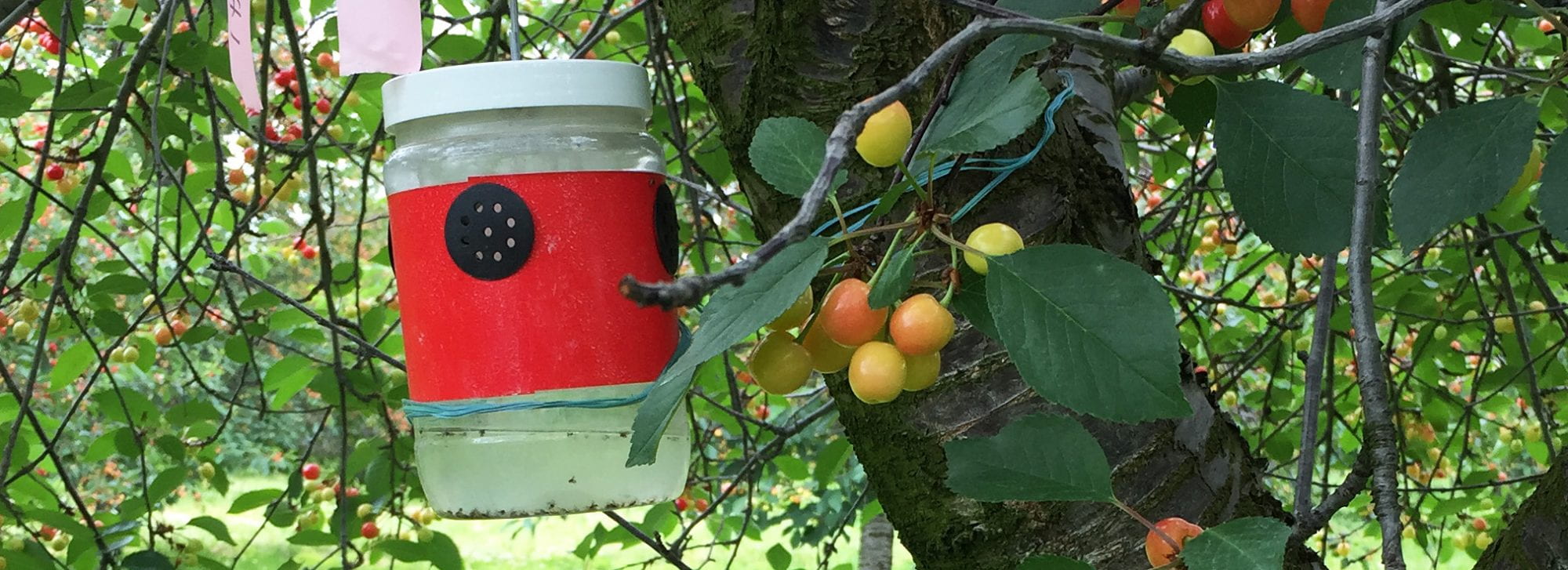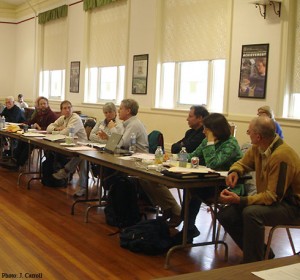Figuring out which SWD trap and lure works best has been an ongoing project for many in the Northeast and across the US and Canada. Below are summarized results from Rich Cowles, Connecticut Agricultural Experiment Station, Greg Loeb, Cornell University, and researchers at the University of Guelph, Ontario, Canada.
From Greg Loeb
In 2015 trials in NY, we compared the commercial Sentry lure and the commercial Trece lure with our fermenting whole wheat dough. For the trial conducted in June and July, where monitoring matters most before SWD populations build, the Scentry was best in terms of number of SWD captured but statistically about the same as the whole wheat dough lure. Scentry and whole wheat lures were also good at capturing SWD before we detected fruit infestation. Scentry was more selective, catching fewer non-target drosophila and fewer other insects.
In 2015, the Trece manufacturer had problems with release rate on their SWD lures that were made early in the year. We tested both Trece and Scenery later in the season (August), using a different Trece lure release design and the two were similar.
For 2016, we are recommending Scentry but will be testing the latest Trece design in June to see if our results from August stand up.
From Rich Cowles
In 2013, tests found the our actively fermenting whole wheat dough lure was clearly superior to the commercially available Trece lure.
In 2014, there were some “tweaks” with the Trece lure and it was the best performing lure, but it has to be used over apple cider vinegar drowning solution (ACV). The Suzukii Trap bait was rated second to the Trece + ACV, and the two were statistically equivalent. The kombucha lure was rated third in that trial, but variation in fermentation of the kombucha probably decreased its ranking.
In 2015, with better kombucha production, the Suzukii Trap and kombucha were neck and neck in performance, and so I think we can expect all three of these baits will perform well and be equivalent for 2016. Both the Trece lure and the Suzukii Trap lure catch fewer unwanted species than the kombucha. Extensive tests of the Suzukii Trap lure have found it highly consistent and more selective for trapping SWD and African fig fly, rather than the other Drosophilid species. The Suzukii Trap lure also tends to capture a somewhat higher ratio of female SWD, so care must be taken to look for female as well as male flies in first detections.
Suzukii Trap, manufactured by BioIberica, is about to be launched to the US market. The Suzukii lure comes in 5-liter jugs. An advantage with the Suzukii Trap lure is that the liquid does not spoil, and can be reused over several weeks. When using this bait you can filter flies when servicing traps with a fine metal mesh coffee filter, and save the lure solution for reuse. The volume that evaporates can be replenished with fresh bait. BioIberica SWD traps are not being marketed in the US. If you use the Suzukii Trap lure you can use (1) a cup trap, but it may not efficiently retain flies, or (2) a modified McPhail trap, which is characterized by having a donut-shaped reservoir for a liquid lure. Flies enter the trap from underneath, by flying through the donut hole. Once inside such a trap, flies rarely leave, because the top of the trap is transparent and flies try to fly upwards to attempt escape. I have designed a modified McPhail trap from a 2-liter soda bottle. When constructing the trap from soda bottles use a small head space volume to greatly enhance trap capture. Instructions for making these traps can be found at: How to Trap Spotted Wing Drosophila, http://www.northeastipm.org/about-us/publications/ipm-insights/how-to-trap-spotted-wing-drosophila/
From University of Guelph
Andrew Frewin, Justin Renkema, Hannah Fraser, and Rebecca Hallett conducted research on ACV, yeast plus sugar water, the commercial Pherocon SWD dual lure, the commercial Suzukii Trap, and the commercial Scentry lure.
They concluded that, on the basis of early SWD capture and fewer non-target captures, the Scentry lure performed best. They are recommending this lure for Ontario in 2016. The Pherocon results were affected by loss of the early weeks' samples and tests need to be repeated. And the ACV and yeast plus sugar water performed poorly compared to the commercial products and are not recommended.
Post content contributed by Mary Concklin, Fruit Production and IPM Extension Educator, University of Connecticut.






